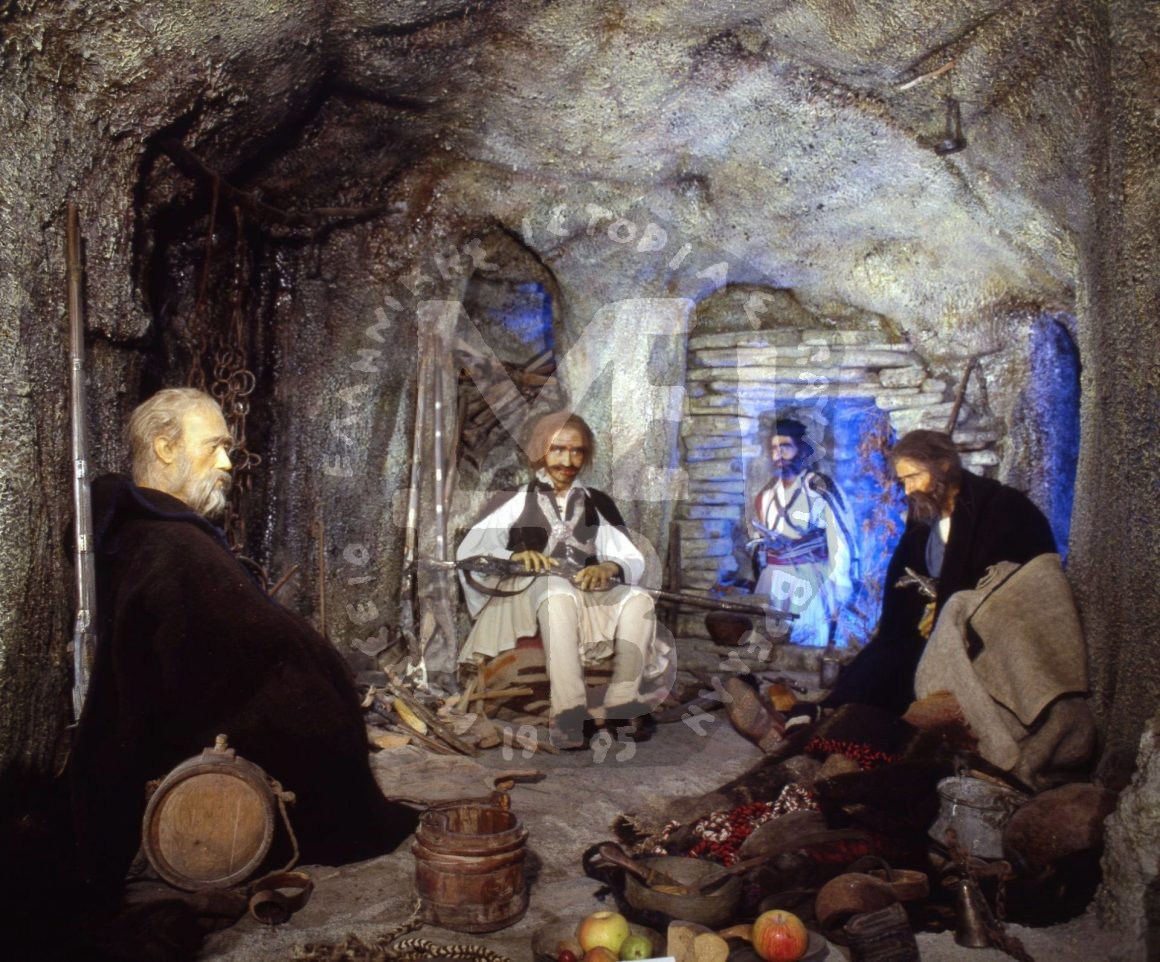“In Greece something incomparable happened. This enslaved for four hundred years nation managed to form its own army, within the conqueror’s state. It planned its freedom with the help of Klephts and Armatoli.
A klepht is not a thief; he is the armed Greek fighting the Turk conqueror and seized what had been robbed of him. He was the pride and joy, the defender of the enslaved nation. The movement began some time after the Fall of Constantinople, around 1529-1565.
The Klephts are organized and very fit; they are the liveliest who distance themselves from the mass. They are singular military forces that took action on the mountains and later on they would constitute the base for the final uprising of the Greeks. They were smart groups with guns and swords, cut off the Turkish conquest, near the fir trees and fountains. They didn’t use to fight pitched battles, for they were few; they would perform surprise attacks or set an ambush. The common people would help them too. They preserved their religion, tradition and customs.
In order to limit their actions, Suleiman the first (1520-1566) decided to inaugurate an old institution of the Byzantine Emperors, which had also been used by the Venetians (armatores).The Turks named them ‘Armatoli’ and the area they supervised ‘Armatoliki’. The idea was that the most famous and dynamic klephts would change their way of life and action. Thus the klephts would be the troublemakers whereas the armatoli would enforce the order. They would protect an area from bandits and klephts. They would get paid by the eparchy they belonged to and would be exempted from certain taxes. This is what the Turks had planned. In practice, Armatoli, in times of danger, would notify the klephts to watch out and take cover. When they didn’t get along, they became klephts again.
An increasing number of armed forces was constantly being created and Acarnania became the center of the Klephts and Armatoli. Toward the end of the pre-revolution period, the total number of armatoliki was 17. They lived almost independently until the time of Ali-pasha, for they experienced great cruelty on part of him and his Turk-Albanians. The armatoli became klephts again. Some headed to the mountains while others to the Ionian Islands, to other countries’ armies (French, English, and Russian). They gained new war experience and later they would form the main body of the independence army of the Revolution of 1821.
I portray a cave, one of the many I have been to when traveling around the beautiful mountains of Greece. The composition is a product of my imagination. There are both armatoli and klephts of different physiognomies from several areas. Their headquarters is a mountainous shepherds cave. All the everyday domestic utensils such as hand mills, large troughs, milking pails, capes, heavy woolen blankets etc, are on the left hand side of the cave. On the right hand side the brave men are getting some rest before attacking again. There are other objects they need inside the cave as well.
The fruits are creations of mine. First I shaped them from clay, then I colored them with temperas and last I gave them the last finish.
I took great care of the outfits. I thought I had to include certain typical parts of their clothing were such as the foustanela (typical pleated skirt), the shirt, the kiousteki (article of clothing worn like a cross on the chest), the talisman, the selahi (the belt whose aim was to hold the guns and knives) and capes from male goat wool.
Vital part of their gear is the kariofili (flintlock) named after their manufacture company ‘Kario e Filio’ in Venice. It is a muzzle-loading rifle with long gun barrel. I made around 45 flintlocks in my old workshop in Ioannina, in 1978. I decorated them with folk relief depictions embellished with nails, rosettes… The butt of the rifles is made of beech wood, the barrel of iron tube and the ornaments of bronze. I used the ‘Savvat’ rusting technique –very popular among the Ioannina silversmiths– to embellish the binding of the barrel. It took me a considerable amount of time to design and make them.
The old klepht, near the fire, covered with his cape, is resting. It is the beginning of winter, high up on the mountains in a remote cave. Most of them are dressed in heavy woolen clothes, each one with his own style, goal and thoughts, the decisions he has made, the bravery and greatness he breaths. All together make up one force, one soul one body.”

